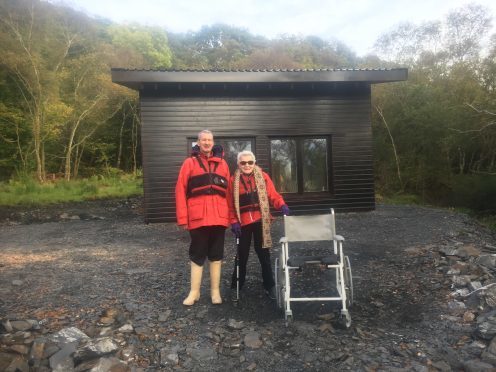An Argyll businessman who built a boat hut to take disabled people sailing could be forced to tear it down – despite the backing of experts.
Graham MacQueen, 65, of Oban, uses the hut near the famous Bridge Over the Atlantic at Seil island as a shelter for disabled family and friends while taking them for day trips in his specially adapted boat.
The deputy lieutenant for Argyll and Bute, charity worker and respected businessman has apologised “unreservedly” for building the structure without planning permission, which he did not realise it required.
He has now applied for retrospective planning consent. However Argyll and Bute Council planners have recommended he be refused, stating the hut has an adverse impact on a scenic area.
Councillors are due to make a decision with the planning committee meets today.
Most recent information from the council is that there have been 17 objections to the hut and 115 expressions of support.
Mr MacQueen’s wife Morven uses a wheelchair and has MS and the hut affords her some shelter while on boat trips. Other family members also have disabilities.
The report before councillors states: “The following representations from health care professionals, social workers and sports professionals have been received in support of the claimed position that special circumstances exist in respect of the applicant and his family members. The submissions contain details relating to medical and disability information.”
Those professionals include a school nurse, district nurse, sports development manager, physiotherapist, carers centre manager, GP, occupational therapist and social worker.
Dr Jo Ferrie, senior lecturer at School of Social and Political Sciences, the University of Glasgow, has also written to the council.
She points out that the Equality Act 2010 allows for positive discrimination for disabled people and additional services can be sanctioned where it produces equal opportunities and access has been an issue.
However, in the report before councillors, officers write: “It is not considered that the highlighted medical and disability needs would constitute an ‘exceptional case’ as required by key planning policy LDP DM 1 as no convincing claim of a specific locational need for the development has been made.
“Whilst it is accepted that the specific qualities of the application site are advantageous to the applicant, the planning authority considers that an opportunity for an appropriate development catering to the needs of the applicant and his family may well be available elsewhere within the local area, within a less sensitive landscape designation.”
